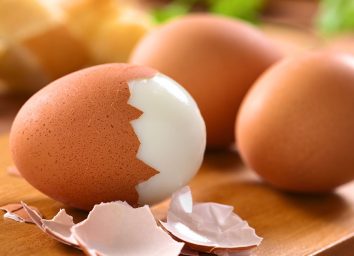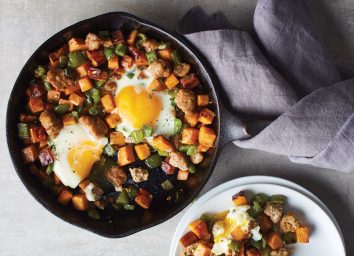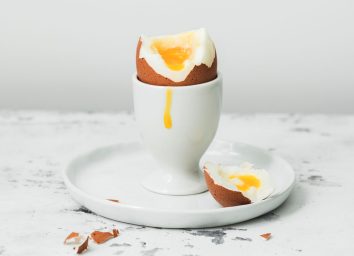The Best and Worst Ways to Cook Eggs—Ranked!
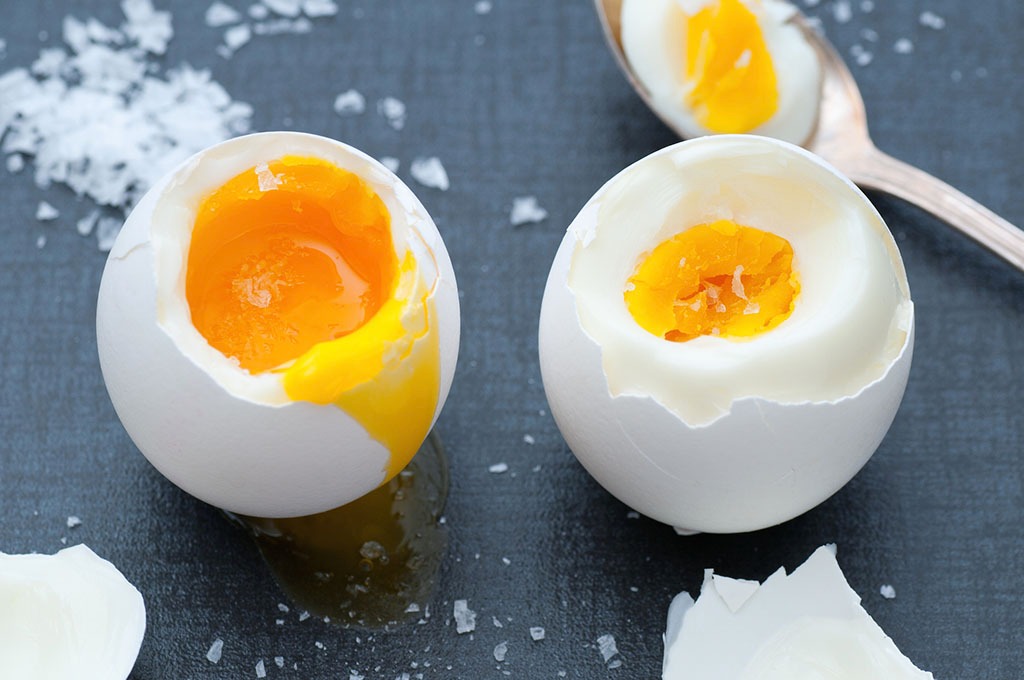
"How would you like your eggs?"
It's a question you've likely been asked many times after placing a breakfast order. But before you answer your usual, have you ever stopped to think that your preferred preparation method can influence how much nutrition you're actually getting from the eggs themselves? Even if you haven't, we're about to tell you anyway.
Research shows that a simple way to maximize the health value of the mighty egg is by choosing the right cooking method. Below, we'll describe the general method associated with each cooking term, lay out the pros and cons of each, and then give our final verdict: a rating from 1-5 with one being the worst and five being the best. Regardless of how we rank each cooking method, bear this in mind: no matter what the cooking method, eating eggs is healthy, and even if there are differences in nutrition, they are very minute. And when it comes to which carton of eggs you should even be grabbing off the shelf, don't miss our exclusive guide: 26 Things You Need to Know Before Buying a Carton of Eggs.
Our Criteria
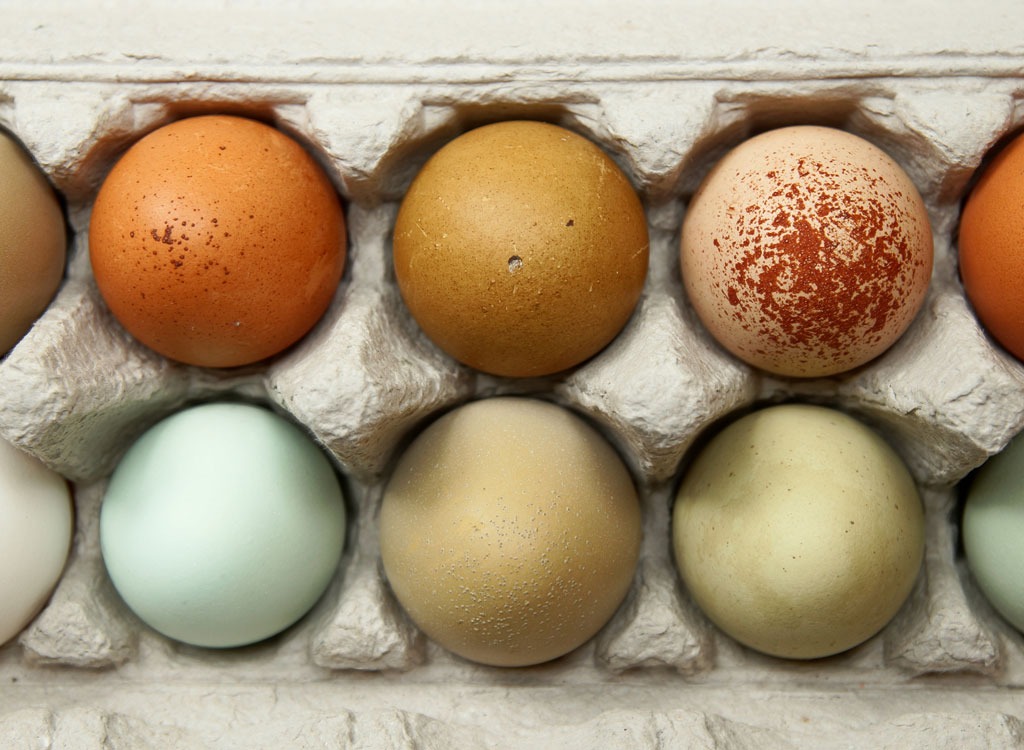
To understand our criteria, you have to understand the benefits of an egg. These were the criteria we judged on:
Amount of Protein
This extremely versatile food is one of the cheapest and most nutrient-dense sources of protein. Additionally, the egg is consistently ranked as one of the highest quality proteins; meaning, the protein found in eggs is more efficiently utilized by our body for growth, according to a review published in The Journal of Sports Science & Medicine. Methods that maximize protein intake (found in the egg whites) were rewarded.
Availability of Micronutrients
Countless micronutrients are found in egg yolks. Eggs are the top source of the belly-fat-fighting B-vitamin, choline, and are in the top 20 dietary sources of metabolism-regulating selenium, mood- and immunity-regulating vitamin D, and energy-promoting vitamin B2 (riboflavin) and B12. Depending on how you cook the eggs, the levels of these nutrients can significantly decrease, so we favored methods that preserved most of these nutrients.
Excess Calories
When it comes to weight loss, calories count. Certain cooking methods require fat, such as oil or butter. Just a tablespoon of butter can add an additional 100 calories to your morning meal. However, if you're not concerned with your weight, you don't necessarily have to be concerned with these cooking fats—if you choose the right kind, that is. We recommend either butter or extra virgin olive oil: A 2016 study published in the journal PLOS ONE found that there is no connection between butter and heart disease (plus, grass-fed butter is actually a great source of fat-fighting fatty acid CLA) and EVOO is rich in heart-healthy monounsaturated fats and disease-fighting antioxidants. On the other hand, cooking your eggs in vegetable oil means you're increasing your intake of omega-6 fatty acids, a group of fats that causes waist-widening inflammation. Because we don't know which type of fat you or a restaurant is using—or how much—we docked cooking methods that included any cooking fat.
Raw Eggs
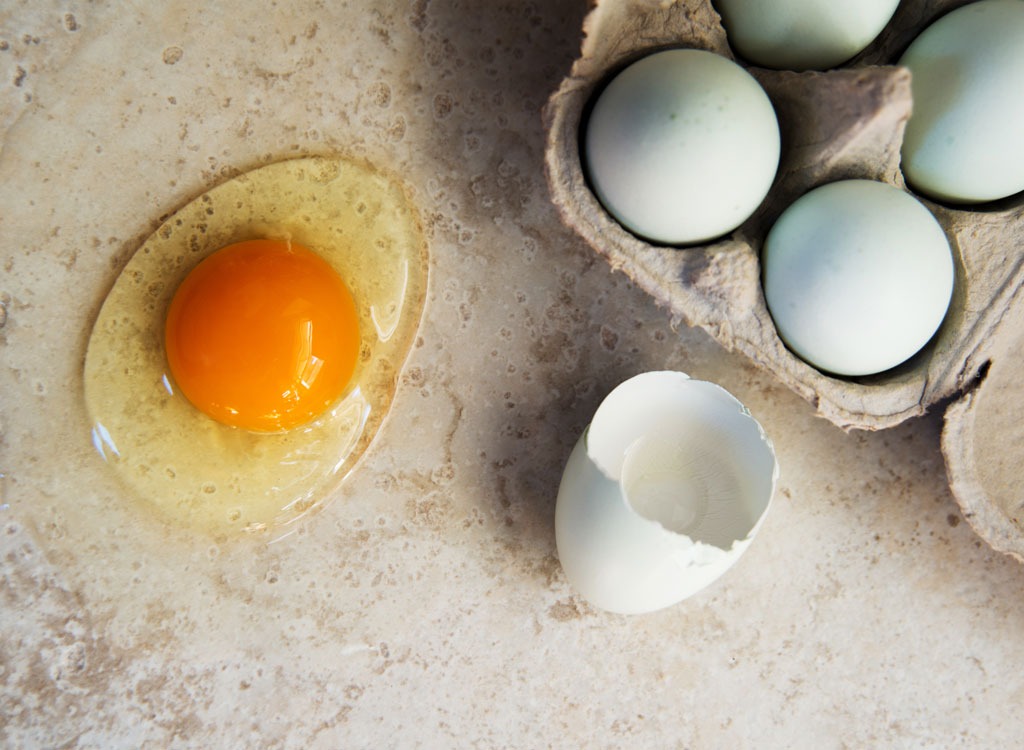
Some people drink raw eggs alone or add them to a shake to increase the amount of protein.
Pros:
One small pro is that raw eggs will contain higher levels of vitamin A than cooked eggs. According to a report published in the International Journal of Food Sciences and Nutrition, the concentrations of vitamin A1 (retinol, which is needed for eyesight, maintenance of the skin, and human development) were 20 percent lower in cooked yolks than those found in raw egg yolks. Luckily, you shouldn't be too concerned with the reduction. In the USDA's nutrition label update, they decided to remove Vitamin A from one of the listed nutrients because "now, Vitamin A deficiencies in the general population are rare."
Cons:
You increase your risk of salmonella (eggs must be heated to 160°F to kill off bad bacteria) and only half of the protein from raw eggs is absorbed by your body (compared to 91 percent in cooked eggs, according to a study published in the Journal of Nutrition). Additionally, raw eggs contain avidin, a protein that binds to biotin—a B vitamin which helps to keep your locks shiny and lustrous—and prevents it from being absorbed. Cooking denatures avidin so it no longer inhibits the absorption of biotin.
Final Verdict: 0/5
The risks here outweigh the benefits—we recommend cooking your eggs.
Baked
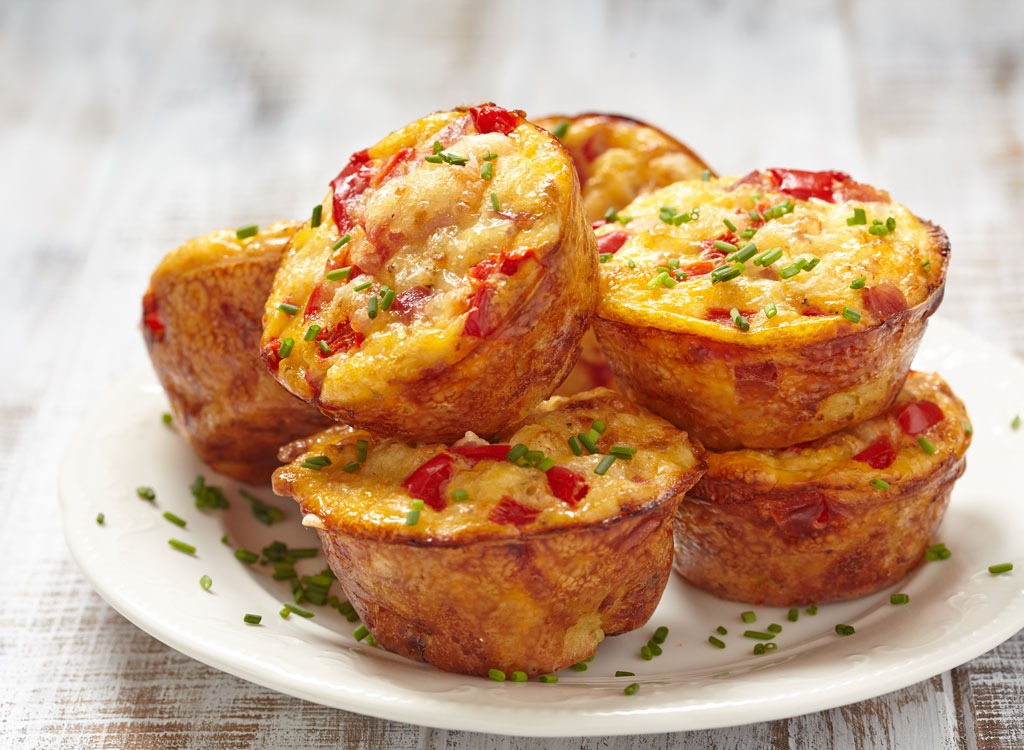
Whole eggs or scrambled eggs are cracked into a cup or muffin tin and baked at 350°F until cooked to order. Some add butter on top.
Pros:
You'll end up consuming the entire egg and this method is hands-off—so you don't have to slave away on the stove!
Cons:
A cooking fat is inevitably used to keep the eggs from sticking to the cup or muffin tin. Also, an extended cooking time can toughen eggs and decrease nutrient levels. In fact, according to a study published in the journal Food Chemistry, when eggs are scrambled and then cooked in a 350°F oven for 40 minutes, only 39 to 45 percent of the vitamin D found in eggs was maintained. On the contrary, when you fry or boil eggs, you can retain 82 to 88 percent of the eggs' immune- and mood-boosting vitamin D.
Final Verdict: 2/5
Since dietary sources of vitamin D are limited (most people "consume" vitamin D through exposure to sunlight), the fact that baking decreases levels of vitamin D resulted in a significant docking in their ratings.
Egg Whites
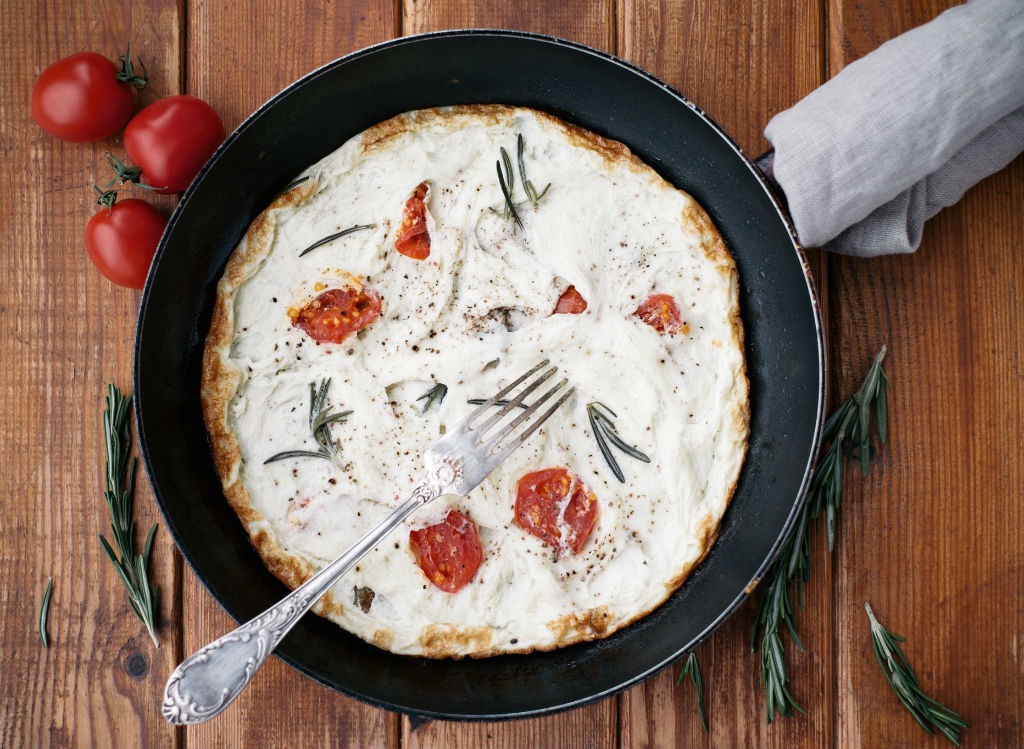
Egg whites came into fashion because American public health officials believed that consuming the cholesterol found in egg yolks could raise your blood levels of cholesterol, which can ultimately lead to increasing your risk of heart attacks and stroke. Now, experts have found that's not the case. In fact, the 2015-2020 Dietary Guidelines have removed the 300-milligram dietary cholesterol limit, referencing the fact that all available evidence suggests there is no relationship between consumption of dietary cholesterol and levels of blood cholesterol. (Truth is, eating eggs may actually help to lower your cholesterol.)
Pros:
A single egg white provides you with roughly 3 grams of protein (which is—surprise!—only half the total 6 grams of protein found in a whole egg) for just 15 calories, whereas the yolk contains an equal 3 grams of protein for 60 calories. So, by leaving out the yolk, you can get an equal amount of protein for fewer calories.
Cons:
You're missing out on the plethora of micronutrients and healthy fatty acids found in the nutrient-dense yolk, including selenium, riboflavin, vitamin D, phosphorus, vitamin B12, folate, iron, vitamin A, vitamin B6, and choline: a B-vitamin that helps prevent the accumulation of belly fat. Additionally, you have to crack an egg to remove the yolk, so really the only way to cook egg whites is with a cooking fat. And finally, if you're purchasing egg whites in a carton, you're likely consuming one of the 20 Foods You Can't Trust since many of these products contain unnecessary additives and are made with watery whites.
Final Verdict: 3/5
Because whites are a low-calorie source of protein, we had to give them props, but any saved calories can easily be undone by using an inflammatory oil to cook them. If you're watching your calories, you can certainly load up on egg whites, but we recommend eating at least one yolk, as it provides many hard-to-get nutrients not commonly found in other foods (namely, choline, selenium, and vitamin D). For example, to make a three-egg omelet, include three egg whites and the yolk from one egg to save yourself 120 calories compared to using three whole eggs.
Over Easy
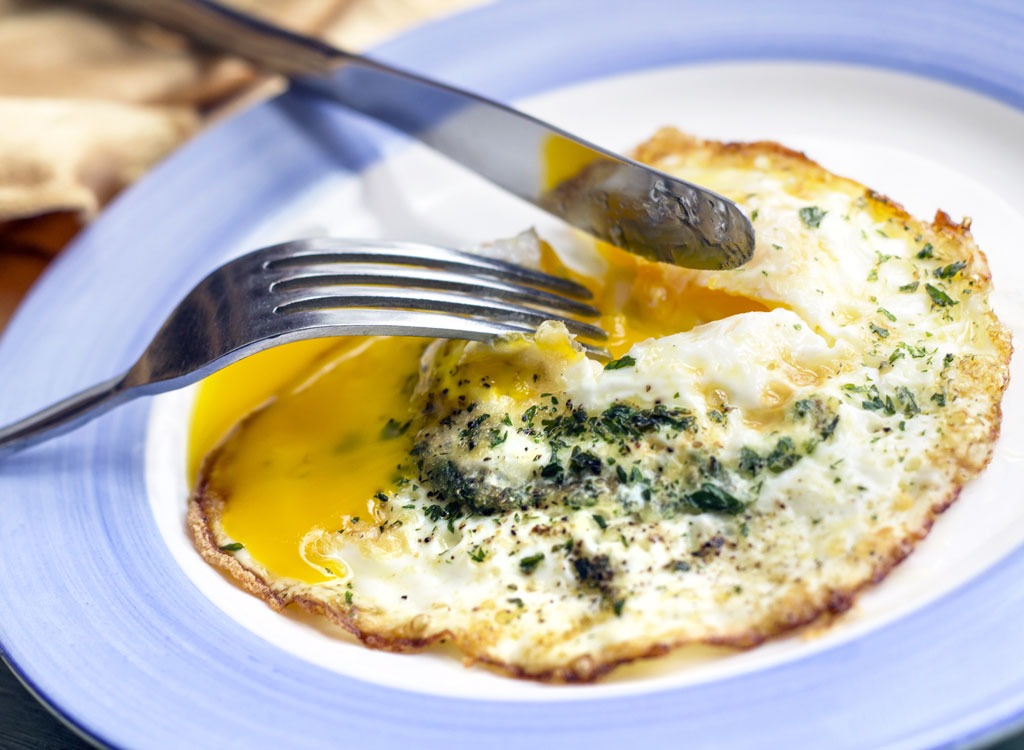
This version of a fried egg is made by cracking a whole egg into a pan with a thin layer of cooking fat. Before the underside of the egg starts to brown, the whole egg (with the yolk intact) is flipped and allowed to cook on the other side, resulting in cooked egg whites and a runny yolk.
Pros:
The flip means you're less likely to be consuming raw egg whites (which means more bioavailable protein!) and your yolk is still full of easily absorbed micronutrients.
Cons:
Flipping the egg over also means that you're layering on another level of grease.
Final Verdict: 3/5
Over Hard
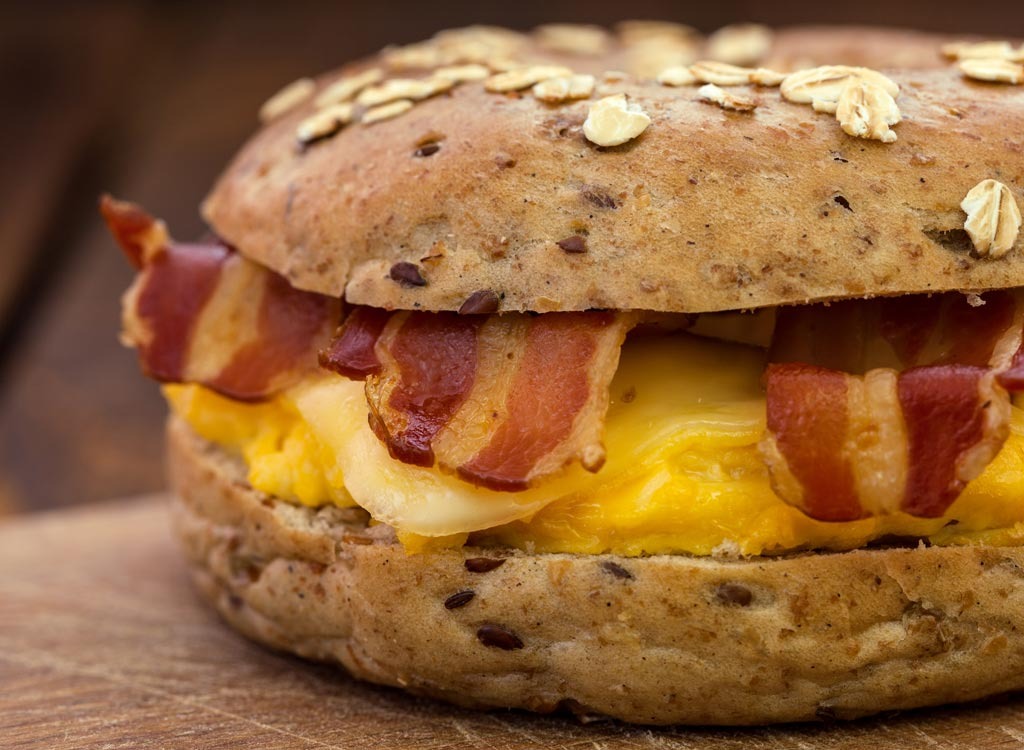
To make an over-hard fried egg, one would crack an egg into an oiled pan and break the yolk. The egg is flipped and allowed to cook entirely on the other side. Thus, both the egg yolk and the egg whites are entirely cooked.
Pros:
You eat the entire egg—yolk and whites!
Cons:
When you cook an egg yolk, you can significantly reduce its levels of heat-sensitive antioxidants and nutrients. When frying yolks, a Journal of Agricultural Food Chemistry found that you could lose as much as 18 percent of an egg's levels of xanthophylls: a class of carotenoids that pass along their free-radical scavenging abilities. Plus, you get a double layer of fat by flipping the egg over to cook both sides.
Final Verdict: 3/5
Scrambled
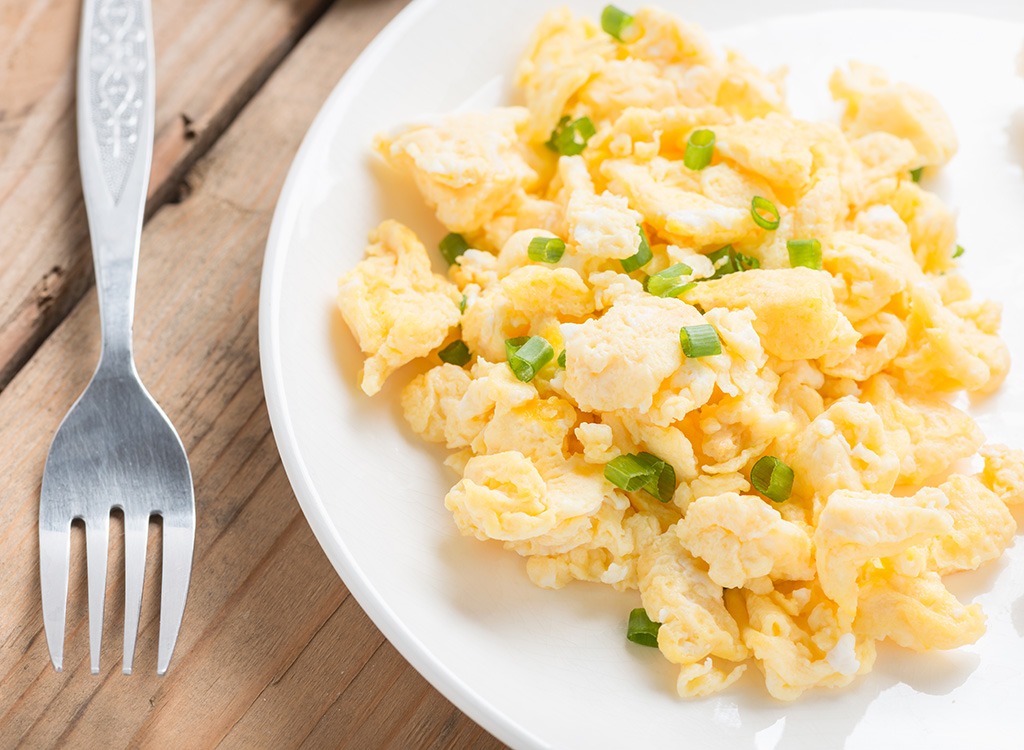
Eggs are cracked into a bowl and scrambled until the whites and yolks are combined. Some people may add water or cream at this point. The beaten eggs are added to a buttered or oiled pan, often over medium-high heat. Using a spatula, eggs are continuously moved around the pan so that each part of the beaten egg touches the heated pan.
Pros:
If you do add a touch of water to your eggs, the added liquid helps to create steam during cooking, which makes the eggs lighter and fluffier. You're eating both the egg and the white. The fast cooking time also means less of a chance of damaging the heat-sensitive nutrients.
Cons:
Scrambling eggs often means overcooked eggs, unfortunately. When eggs cook, the proteins in the eggs form tight bonds. As they pull closer and closer to each other and become too hot, they begin to squeeze liquid out from the curds (your eggs will look like you served them on a still-wet plate). The issue with this is that escaped water may remove with it some water-soluble vitamins, namely, one of the vitamins that make eggs such an important dietary source: vitamin B12. This essential vitamin is only found in animal foods (one egg provides about 10 percent of your daily recommended intake of the vitamin), and vegetarians are often at risk of a vitamin B12 deficiency, which can cause inflammation and health issues. Scrambled eggs also are notorious for being cooked with a lot of butter.
Final Verdict: 3/5
Hard Boiled
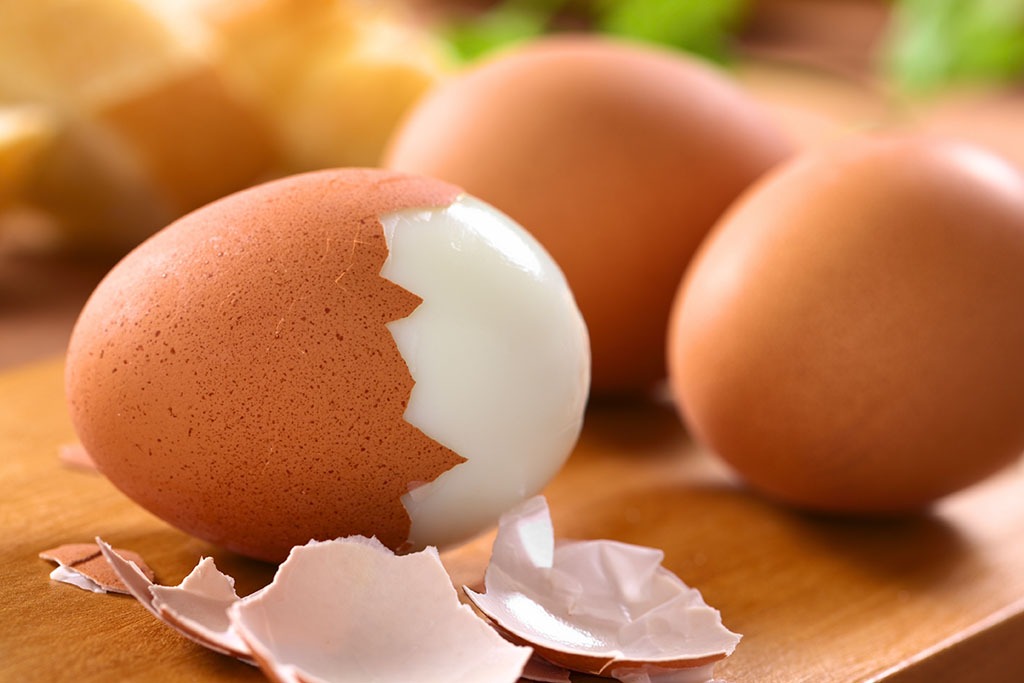
Hard-boiled eggs are cooked in their shells in a pot of boiling water for 8 to 10 minutes. This length of cooking time allows both the egg white and egg yolk to solidify entirely.
Pros:
This fat-free cooking method preserves the entire egg.
Cons:
If you've ever peeled a hard-boiled egg, you know that sometimes part of the white gets stuck to the shell, which means you can miss out on some protein. (We know, it's fairly insignificant). More importantly, a study published in the Journal of Agricultural Food Chemistry found that the method of boiling eggs caused the greatest reduction in antioxidant content in egg yolks (22.5 percent). The antioxidant affected is lutein: a bioactive compound known to play a role in maintaining eye health. This is likely caused by the long period of cooking time.
Final Verdict: 3/5
The possibility of overcooking the eggs can lead to significant nutrient losses.
Omelet
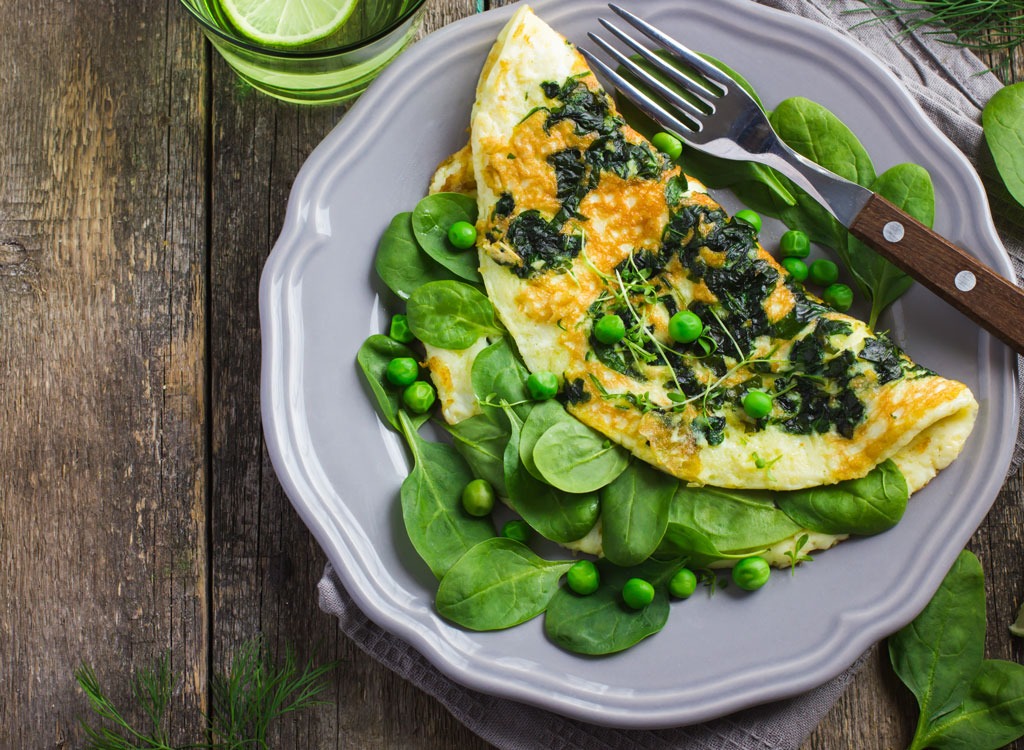
If you asked five people how they make an omelet, you'd likely get five different answers. There are different techniques for Americans, British, and French. The omelet can be country- or diner-style. They're filled or served plain. They all start with beaten eggs. Some cooks add a bit of water or cream to the whisked eggs. Then, the beaten eggs are poured into a buttered pan—some use a pan over low heat, some over high heat. Some methods move the eggs around the pan, creating curds, and the uncooked portions are cooked by lifting the edge of the omelet to allow the runny mixture to flow underneath. Once cooked to your preference, the omelet is either rolled or folded in half.
Pros:
You're eating the entire egg, and because omelets are usually served with veggies, you have a higher likelihood of getting in your daily greens!
Cons:
Omelets can be cooked for a longer period of time in order to fully cook the top of the eggs that may never touch the hot pan. In doing so, you have a higher likelihood of losing heat-sensitive micronutrients found in the yolk.
Final Verdict: 4/5
Sunny-Side Up
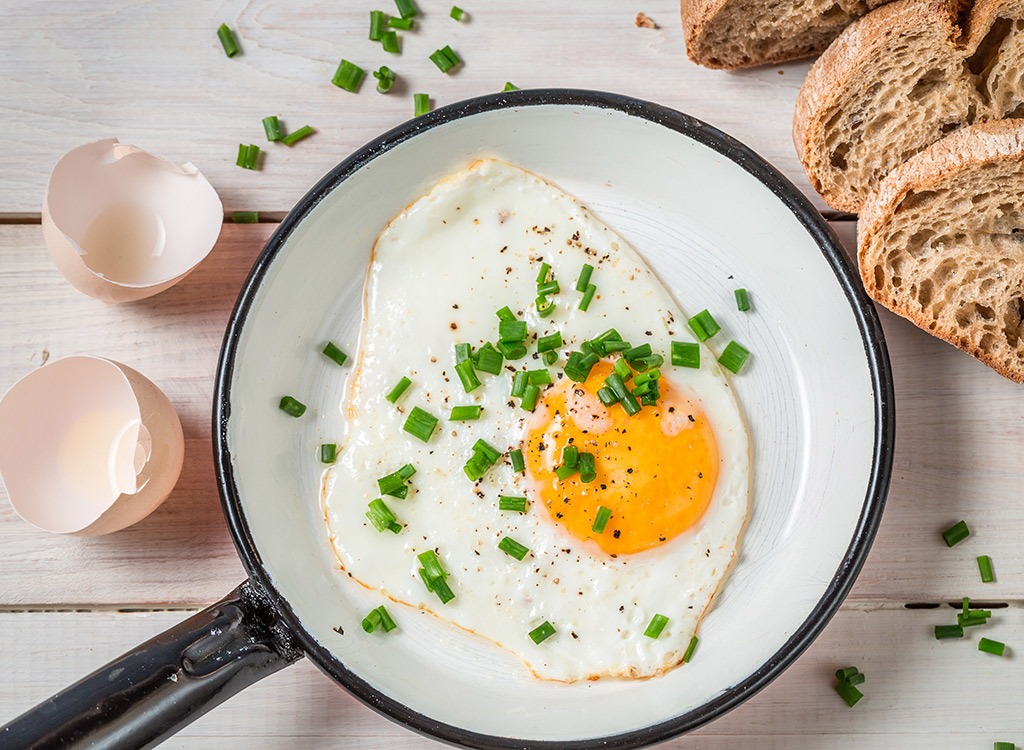
It may be the preferable way of photographing eggs thanks to the method's focus on that glistening golden yolk, but few home cooks take a stab at the meticulous cooking method. Why? It's because the top of the egg never touches heat, so the whites can turn out slimy and undercooked if not done properly. A cook will crack an egg into an oiled or buttered nonstick pan and never flip the egg. In order for the top to cook, the chef will either baste the top of the egg whites with the extra cooking fat in the bottom of the pan, cook the egg slowly over medium-low heat so the bottom doesn't burn but the egg cooks through, or put a lid over the pan to allow the steam to cook the egg.
Pros:
When cooked properly, sunny-side-up eggs will provide you with all the nutrients from a runny yolk while only using a bit of cooking fat.
Cons:
Because the egg is not flipped, sunny-side-up eggs may not be sufficiently cooked to eliminate bacteria and could pose a health risk.
Final Verdict: 4/5
Poached
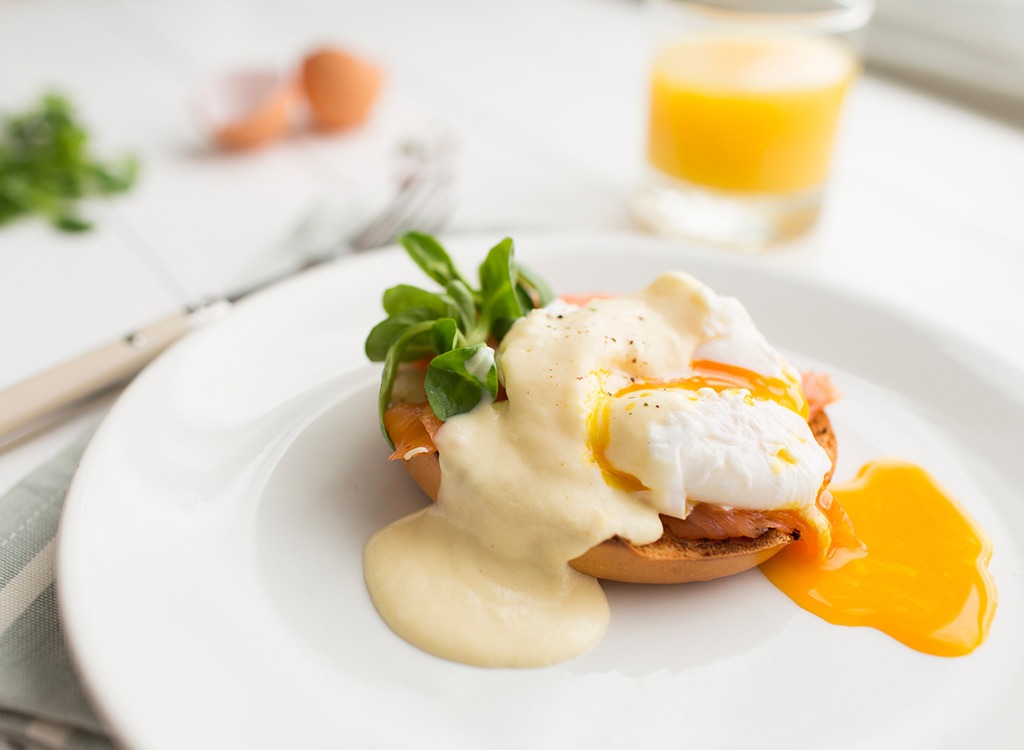
This fat-free cooking method involves lowering a cracked egg into simmering water and allowing it to cook for 4 to 5 minutes. This results in cooked whites with a runny yolk.
Pros:
While studies suggest cooked egg-white protein is more easily digested because it is already denatured, some research has found a raw or runny yolk contains up to 50 percent more nutrients than a cooked yolk that's been hard-boiled.
Cons:
Fresh, grade AA eggs are the best eggs to use when poaching. These are the finest quality eggs with thick and firm whites. If you can't find this grade, your poached egg will likely create wisps of egg whites after you've dropped it in, which can mean you end up consuming less protein than if you cooked the egg using any other method.
Final Verdict: 4/5
It's a fat-free method that keeps yolks runny, but if you don't have great eggs, you may end up losing a significant amount of the protein-rich whites in the poaching liquid.
Soft Boiled
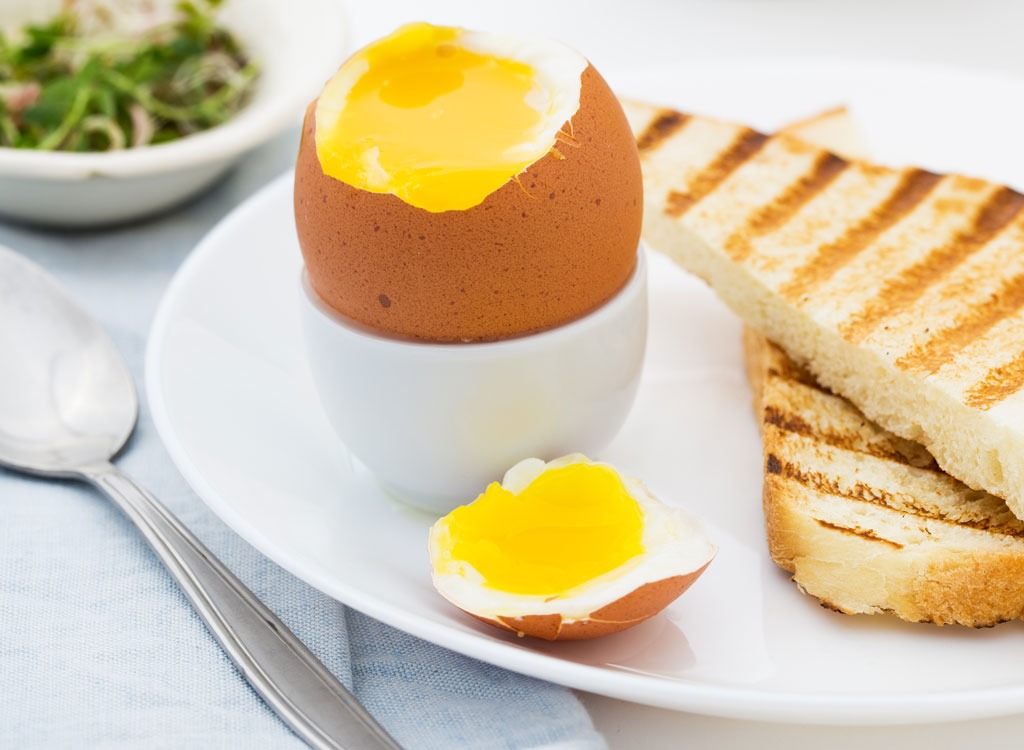
Eggs are placed in a pot of boiling water for 5 to 6 minutes. This length of cooking time will cook the white of the egg entirely while allowing the yolk to stay runny.
Pros:
The same as hard-boiled eggs: fat-free and you preserve the entire egg. Additionally, because the yolk remains runny, you preserve more of its heat-sensitive nutrients.
Cons:
Only that you may lose a bit of egg white when you peel the egg.
Final Verdict: 5/5
This is our favorite method of cooking an egg! It's low-calorie, cooks the protein-rich whites all the way through, and preserves all the micronutrients in the yolk.
Sign up for our newsletter to get daily recipes and food news in your inbox!
Read more:
- The Best Breakfast Sandwich in Every State
- Ways Eating Eggs Can Help You Lose Weight
- Why You Should Be Eating Eggs Right Now
